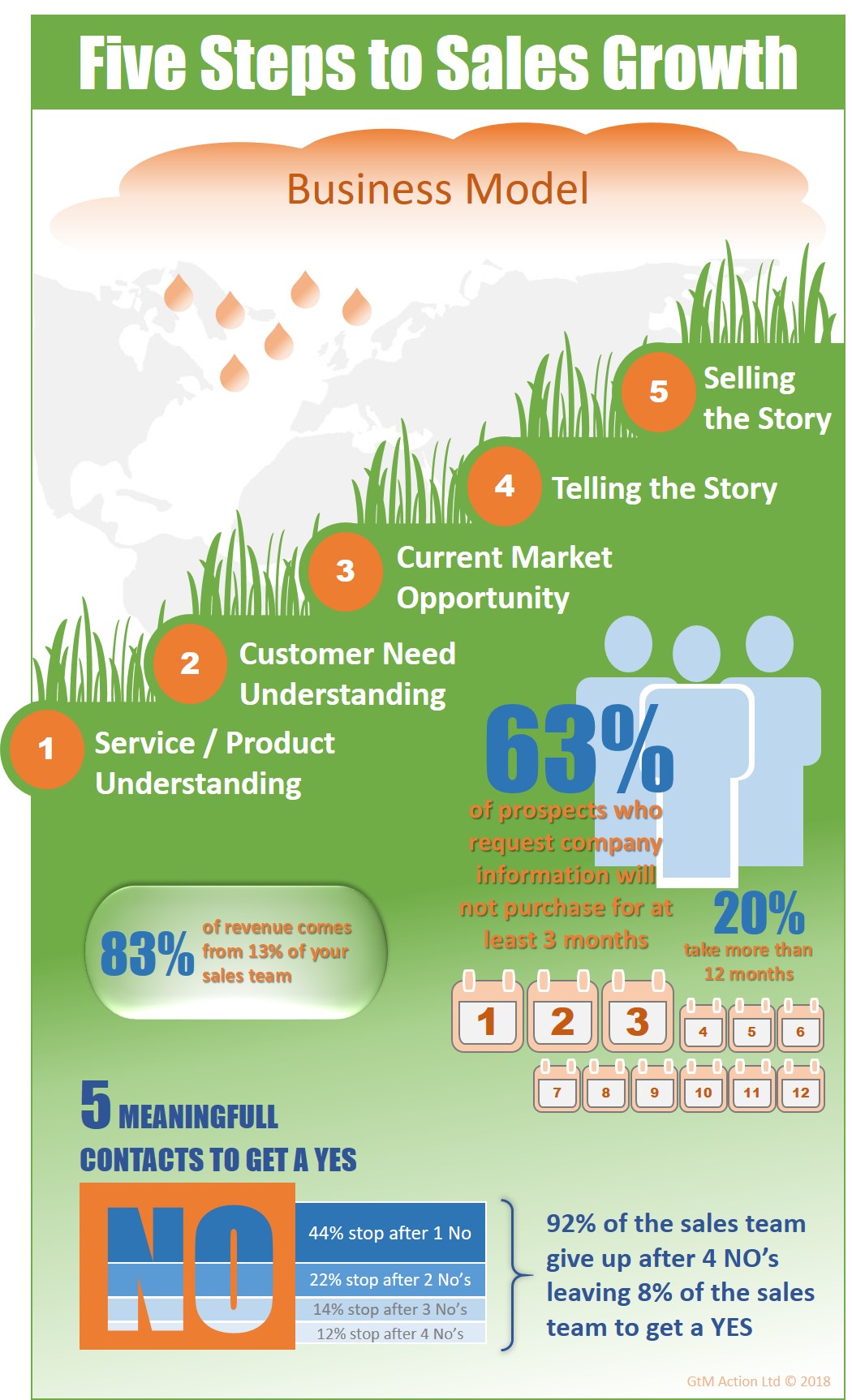Step 3. How Big is Your Market Opportunity?My last post focused on understanding how relevant your products are to your customers (Step 1 & 2), Step 3 below is about sizing your target market and quantifying what the current opportunity is. These are the key questions you need to consider as you work through sizing your opportunity.
Like Step 1 and 2 you’ll get more out of this step if you can get your sales, marketing and product teams working through these issues together. As a reminder all the Five Steps to Sales Growth are summarized here. STEP 3: Current Market Opportunity
The level of quantification each business needs to size its target market will vary considerably depending on your sponsor’s and stakeholder’s requirements. In most cases I have found market sizing is a combination of facts, hypothesis and assumptions. Get comfortable with the level of ambiguity you will accept and move forward. What are some of the challenges you have experienced in sizing your target markets, does any of the above sound familiar? In my next post I’ll provide more examples and thoughts to help you tell your story – Step 4: How Are You Telling Your Story?.
0 Comments
STEP 1: Product Understanding / STEP 2: Customer UnderstandingFollowing on from my first summary post on the Five Steps to Sales Growth below are key questions, examples and thoughts to help you tackle Step 1 and Step 2. Ideally you will want your sales, marketing and product teams working through these issues together.
STEP 1: Service / Product Understanding
Note: These points assume you already have customers using your product/service. If not and you are still defining what you will offer you should swap Step 1 and Step 2 around. STEP 2: Customer Need Understanding
These are just a slice of the issues you may need to address for each step. Feel free to add comments from your own experience within your markets, products and services. In my next post I’ll provide more examples and thoughts to help you address the challenges of assessing your market size in Step 3: How Big is Your Market Opportunity? WE NEED MORE SALES – 5 STEPS TO SALES GROWTHOver the past 17 years I have consulted to, managed and coached dozens of businesses from multinationals to early stage start-ups. "We need more sales" is often what I hear and at the core of the many answers to this question are the following five steps to sales growth. At times only one of these steps is top of the business agenda and that’s ok as long as it is in context with the other four. The biggest failures, however, occur when improving just one of these steps is considered as the full sales strategy and therefore relied upon to deliver sales growth. To build and maintain healthy sales, each step must be considered as being interdependent.
Businesses often find that they are in a continuous evolutionary state with respect to almost every step listed. I can’t stress enough the importance of acknowledging each step as a fundamental component of the full sales strategy. Taking the time to audit where you are at with each of these steps is a far better investment than reacting to underperforming sales results by firing, hiring or changing incentive plans for your sales teams. In this age of new digital sales techniques, tricks and skills being touted as the next best thing it has never been more important than now to develop a considered and holistic sales approach. In my upcoming posts I hope to help your understanding of these issues by drilling down on each of the five steps with practical clues and share examples on how to execute for your business. Details for each of these steps can now be found at the following links; Step 1 and Step 2, Step 3, Step 4 and Step 5 here |
Mike OgleHas a passion for business success with values-based stakeholder relationship management always at the core. Archives
October 2022
|
|
Phone: +64 21 747 426 |



 RSS Feed
RSS Feed


